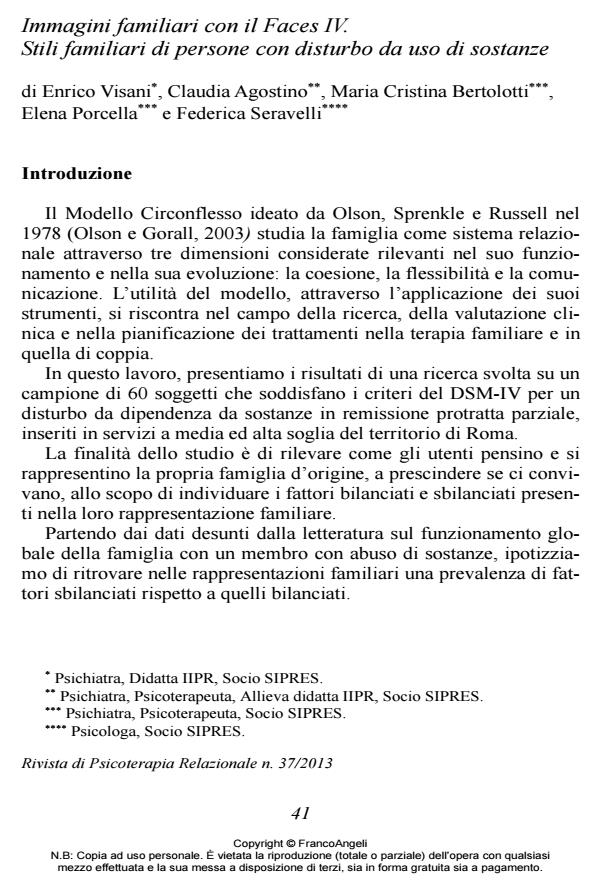Family pictures with Faces IV. Family styles of people with a drug addiction
Journal title RIVISTA DI PSICOTERAPIA RELAZIONALE
Author/s Enrico Visani, Claudia Agostino, Maria Cristina Bertolotti, Elena Porcella, Federica Seravelli
Publishing Year 2013 Issue 2013/37
Language Italian Pages 15 P. 41-55 File size 820 KB
DOI 10.3280/PR2013-037002
DOI is like a bar code for intellectual property: to have more infomation
click here
Below, you can see the article first page
If you want to buy this article in PDF format, you can do it, following the instructions to buy download credits

FrancoAngeli is member of Publishers International Linking Association, Inc (PILA), a not-for-profit association which run the CrossRef service enabling links to and from online scholarly content.
In this study are presented data from a research carried out on a population of people with substance use disorder concerning the representation of family styles of their own families of origin. In the research was used the questionnaire Faces IV, recently revised by Olson and Gorall, and a sociodemographic tab to identify the main features of those involved in the study. From the results we found that observed drug addict people have an overall perception of their own family characterised by scarcity of protective factors (in terms of cohesion and flexibility), ineffective comunicative style and a significant dissatisfaction of family functioning, consistetly with the assumptions of the Olson Circumflex Model. Medium profile detects in the unbalanced scales a raising of Disengagement (as regard Cohesion) and Disorganization (as regard Flexibility). The representation of the emotional link experienced by drug addicts in their family seems characterized by aspects of emotional detachment, while in the area of management of relational rules and roles, emerges a perception with both aspects of rigidity and disorganization.
Keywords: Drug addiction, abuse of substances, family therapy, family research, Faces IV Olson.
Enrico Visani, Claudia Agostino, Maria Cristina Bertolotti, Elena Porcella, Federica Seravelli, Immagini familiari con il Faces IV. Stili familiari di persone con disturbo da uso di sostanze in "RIVISTA DI PSICOTERAPIA RELAZIONALE " 37/2013, pp 41-55, DOI: 10.3280/PR2013-037002